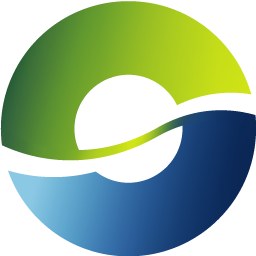Note: This is documentation for version 4.11 of Source. For a different version of Source, select the relevant space by using the Spaces menu in the toolbar above
 Source User Guide 4.11
Source User Guide 4.11
What is Source?
Welcome to Source - an application that can be used for both catchment and river modelling. Source provides a flexible structure that allows you to select a level of model complexity appropriate to the problem at hand and within any constraints imposed by your available data and knowledge. You can construct models by selecting and linking component models from a range of available options.
Source is designed to:
- Support the construction and operation of river models that mimic river behaviour. Water resource systems can be analysed for periods that range from days to many years; and
- Allow you to construct and interrogate water and contaminant transport models to assess the impact of future change, on parameters of interest.
You can build various kinds of scenarios, including:
- Basin planning scenarios,
- River Operator scenarios, which are intended to support day-to-day operations; and
- Catchment scenarios, which are intended to model water quality constituents (eg. salinity).
Using the Source User Guide
This guide has been designed so that it is best viewed electronically. Many features of this guide, such as hyperlinks, will not be available if printed. The guide can be accessed online by navigating to ewater.atlassian.net/wiki, and selecting Source User Guide 4.11 from the Spaces menu on the top.
The Source User Guide provides:
- information on operating Source, including specifying catchment geometry, selecting component models, generating river models, running a project and viewing results;
- an overview of the broad concepts underlying Source;
- information on data formats compatible with Source; and
- The Scientific Reference Guide, which provides the scientific background of each component used in Source.
To get started you can choose a topic of interest from the navigation panel on the left, or from the topic links below.
Getting StartedInformation on system requirements, installing and getting support | Scientific and Technical ReferenceThe Source Scientific Reference Guide details the theory behind the software, including scientific provenance, parameters defaults and recommended ranges, relevant algorithms and references. | |
/wiki/spaces/SD411/pages/53340328Unable to render {children}. We can't show you this information because you don't have access to the content. | ||
Glossary |
We welcome comments on how the quality and effectiveness of the User Guide can be improved. To add comments you will need to be logged into Confluence, and a comments field will appear at the bottom of each page. All comments will be viewed by the Documentation Team.
Accessing the online documents
You can access the Source User Guide online in one of two ways:
- By following the links within the Source software. The Help menu or the feature editors (nodes or links) contain links to the user guide and scientific reference guide; or
- By navigating to ewater.atlassian.net/wiki, and select Source User Guide 4.11 from the Spaces menu on the top.
Refer to 4.1 - Production Release (August 2016) for notes associated with the release. Alternatively consult the Source revision history in the online eWater Community wiki.
To watch the online documentation demonstration video, click on this link: Online Documentation Demonstration.
Features:
- This guide has been designed so that it is best viewed electronically. Many features of this guide, such as hyperlinks, will not be available if printed;
- Navigation aids present in the guides indicate the section you are currently viewing;
- You can search for content within this guide using the search box in the top left hand corner of the blue navigation bar.
- To search for content within a page, press Ctrl+F, and enter the search term.
Troubleshooting and FAQs
Please see the Troubleshooting and Debugging section of the user guide. If this does not answer your question, please contact us.
Related information sources
Guidelines for water management modelling
As a major provider of modelling products, eWater is responsible for ensuring they are well used. To this end, a set of generic guidelines have been published to promote a best practice, quality assured approach for:
- The application of modelling tools, primarily to address water management problems; and
- The provision of decision support to end-users of model results.
These guidelines cover risk assessment, decision support, and communication and interaction between you and end-users of model results, as well as technical aspects of modelling. They also provide a framework for a series of guidelines relevant to the application of certain functionality in Source, such as modelling storages and wetlands, modelling water sharing rules and uncertainty analysis.
This "key" symbol is associated with recommendations and guidelines for best practice modelling provided by a panel of experienced Source users. However, they are not necessarily appropriate in every situation. You should always rely on your own judgement and experience to decide whether to incorporate a particular recommendation or guideline into your model. |
It is highly recommend that you read “Guidelines for water management modelling” before selecting a modelling platform for your application. Following these guidelines is a critical aspect of developing robust, reliable and defendable models. They can be accessed from eWater's Toolkit.
